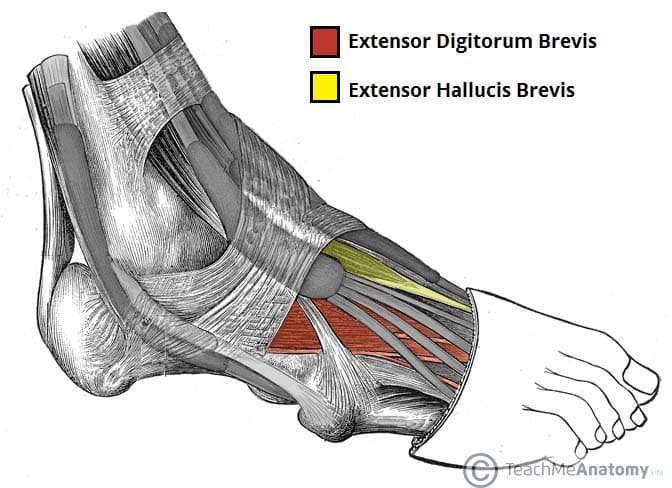
The dorsal foot is the top surface of the foot, often overlooked but essential for balance and movement. This area plays a crucial role in weight distribution and stability during activities like walking, running, and standing. Strengthening the muscles in the dorsal foot can improve overall foot function, reduce the risk of injuries, and enhance athletic performance. Understanding the importance of the dorsal foot and incorporating targeted exercises into your routine can make a significant difference in your foot health. Let’s explore the benefits and ways to care for this vital part of your body.
The Fascinating World of the Dorsal Foot: Unveiling the Secrets of Your Feet
We often take our feet for granted, but did you know that the dorsal foot plays a crucial role in our daily activities? In this article, we will dive into the wonders of the dorsal foot and discover its anatomy, functions, common issues, and how to care for this essential part of our body.
Understanding the Anatomy of the Dorsal Foot
The dorsal foot is the top part of your foot, opposite to the sole. It consists of various bones, muscles, tendons, and ligaments that work together to support your body weight, provide balance, and enable movement. Let’s take a closer look at the key components of the dorsal foot:
Bones
The dorsal foot is primarily composed of several bones, including the tarsal bones, metatarsal bones, and phalanges. These bones form the arch of the foot, which acts as a natural shock absorber and helps distribute your body weight evenly.
Muscles and Tendons
Muscles and tendons in the dorsal foot play a vital role in allowing you to walk, run, jump, and perform various activities. The muscles work together to move the foot and toes, while the tendons connect the muscles to the bones, enabling smooth and coordinated movements.
Ligaments
Ligaments are tough bands of tissue that connect bones to other bones, providing stability to the joints. In the dorsal foot, ligaments help support the arch and prevent excessive movement, reducing the risk of injuries.
The Functions of the Dorsal Foot
The dorsal foot is involved in a wide range of functions that are essential for our daily lives. Some of the key functions of the dorsal foot include:
– **Support and Weight Distribution:** The arch of the foot helps support your body weight and distributes it evenly, reducing strain on the muscles and joints.
– **Balance and Stability:** The dorsal foot plays a crucial role in maintaining balance and stability while standing, walking, or engaging in physical activities.
– **Movement and Mobility:** Muscles and tendons in the dorsal foot enable you to move your foot and toes, allowing you to walk, run, and perform various movements with ease.
Common Issues Affecting the Dorsal Foot
Despite its importance, the dorsal foot is susceptible to various issues that can cause pain and discomfort. Some common problems that affect the dorsal foot include:
Plantar Fasciitis
Plantar fasciitis is a common condition that causes pain and inflammation in the plantar fascia, a thick band of tissue that runs along the bottom of the foot. This can lead to pain in the dorsal foot when walking or standing for long periods.
Metatarsalgia
Metatarsalgia is a condition that causes pain and inflammation in the ball of the foot, near the metatarsal bones. This can result in discomfort in the dorsal foot, especially when walking or running.
Flat Feet
Flat feet, or fallen arches, occur when the arch of the foot collapses, causing the entire sole to come into contact with the ground. This can lead to pain and discomfort in the dorsal foot, as well as other parts of the foot and lower limbs.
Caring for Your Dorsal Foot
To keep your dorsal foot healthy and functioning optimally, it’s essential to take good care of it. Here are some tips to help you maintain the health of your dorsal foot:
Proper Footwear
Wearing supportive and properly fitting shoes is crucial for the health of your dorsal foot. Choose footwear that provides adequate arch support, cushioning, and stability to prevent injuries and discomfort.
Stretching and Strengthening Exercises
Performing regular stretching and strengthening exercises can help improve the flexibility and strength of the muscles in your dorsal foot. Toe curls, ankle circles, and calf raises are some effective exercises to include in your routine.
Rest and Recovery
Give your dorsal foot time to rest and recover after prolonged periods of activity. Avoid overuse and high-impact activities that can strain the muscles and ligaments in your foot.
In conclusion, the dorsal foot is a remarkable part of our body that plays a crucial role in supporting our daily activities. By understanding its anatomy, functions, common issues, and how to care for it, we can ensure that our feet remain healthy, strong, and pain-free. Remember to listen to your body, pay attention to any signs of discomfort, and seek professional help if you experience persistent pain in your dorsal foot. Taking good care of your feet will not only benefit your overall mobility but also enhance your quality of life.
Dorsal foot muscles
Frequently Asked Questions
What is the dorsal foot?
The dorsal foot refers to the top part of the foot, which is the area facing upward when standing and is opposite to the sole of the foot.
What structures are located on the dorsal foot?
The dorsal foot contains various structures, including bones, tendons, ligaments, nerves, blood vessels, and muscles that support movement and function of the foot.
How is the dorsal foot different from the plantar foot?
The dorsal foot is characterized by its location on the top side of the foot, while the plantar foot refers to the underside of the foot that comes in direct contact with the ground during activities like walking.
What are common injuries associated with the dorsal foot?
Common injuries that can affect the dorsal foot include sprains, fractures, tendonitis, and nerve compression, which may result from trauma, overuse, or underlying medical conditions.
Final Thoughts
In conclusion, the dorsal foot plays a crucial role in our daily movements. Understanding its anatomy and function can help prevent injuries and improve overall foot health. By maintaining strength and flexibility in the dorsal foot, we can enhance our balance and stability. Paying attention to this area can lead to better performance in physical activities and reduce the risk of developing foot-related issues.






